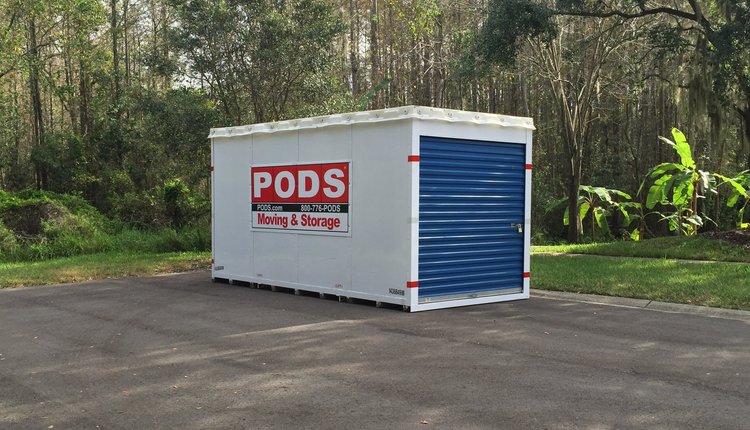Last night I went to the UPS Investor Relations website (http://www.investors.ups.com/phoenix.zhtml?c=62900&p=quarterlyearnings) and gave another listen to the 4th Quarter investor conference call. I try to listen in each quarter to this event to help me understand what’s going on in the marketplace from the carrier perspective.
There were a few statements that were made by UPS senior management that are causing me some lost sleep and I wanted to see if I could read between the lines to perhaps better prepare for what may be coming down the track later this year.
For shippers and investors two things happened in December that caused UPS some bad press.
First, was the fact that there was “too much volume”. Normally volume is a good thing, because UPS should make more money the more units it puts through its network. If you follow UPS you know that the opposite happened this past holiday season and their earnings suffered as a result of December deluge of parcels. They admit that some of the earnings decline was due to paying out service failure refunds. I don’t know if UPS had decided to proactively refund air shipments that failed to meet the published guarantee (outside of shipments delayed due to weather – and the service guarantee for ground shipments that are suspended during the shipping peak) but it would not surprise me if they did.
The fact is that UPS picked up, transported to destination, and delivered, thousands of packages and UPS is standing up and honoring its refund commitment, even if it hurts the bottom line and ultimately the investors, and they did all that work for free for the shipper after paying the refund out.
My take is they handled 50 million more packages than q4 of 2013 and made $100 million less dollars then the prior year. Yikes! This clearly was not according to their “plan”.
UPS is very protective of its brand and the image it portrays. UPS is, and has always been, a class act and the senior management is internally distressed at how the brand was sullied due to the publicity and reality of so many failed shipments, and shippers blaming the carrier for disappointing buyers with late deliveries.
I’m very confidant UPS is not going to put itself in that position again. They have stated that they are going to make huge investments in technology and capacity to help make sure they can more effectively handle incremental volumes and to do so profitably.
One has to understand though that a great deal of the problem was created by a spate of storms that affected the carrier and which closed down its network in Texas, and also weather in the Midwest that affected the air network. The problem was exacerbated by ever increasing volume flooding the system while they were doing all that was humanly possible to dig out, which included among others, flying a thousand professionals from their home bases down to Texas to assist in clearing out the backlog created outside of UPS’ control. For this Herculean move UPS is to be applauded and their employees thanked appropriately.
There are some diversion strategies one can deploy to the network when there is bad weather, but one can’t have an infinite plan for crippling storms that may occur anywhere.
Part of the blame game, it appears, was that shippers were loading up trailers of packages and posting them as having been tendered to UPS when in fact the packages were not yet really in the custodial care of UPS and / or were on trailers that may have been in UPS’ yard to be unloaded (and UPS admits that they needed more bay doors to load and unload and this will be resolved) but I predict, we are going to see this coming year, new “shipment status codes” on the UPS tracking site that more accurately reflects where shipments are at any given point in time. UPS needs greater visibility in particular with “drop shippers” so they can better plan for incoming large volumes and being able to predict when that volume is going to hit a hub. There may be additional rules as to when and how shippers can drop trailers into UPS’ network. My tummy also tells me that UPS may change the “start the clock” from where a service guarantee takes its cue for the UPS promised delivery commitment. One must understand that many shippers comingle into trailers (at their own peril) various service type shipments that are being tendered to UPS. The caution is this, that just because a website has a UPS tracking number and a link to the UPS tracking site, does not mean that UPS is willing to take all the heat for a packages whereabouts, in particular if the package has not really been turned over to a set of UPS hands yet.
There may be new rules as to what retailers and e-tailers can post and say about the status of packages that are to be tendered to UPS and / or have been tendered to UPS to make sure the reputation of UPS is not unfairly tarnished. We may also see UPS require shippers to hold or segregate (for bypass) shipments that are destined to areas that are known to be in distress, as happened in Texas. It was just wrong for shippers to continue to guarantee a delivery to consumers in affected areas when it was very well known that there was a significant weather delay and a bottleneck was happening and what points would be affected.
I suspect there is also going to be some conversations around when the cut off is for the guarantee of shipments for delivery by Christmas, by air. We may well see a suspension of the air service guarantee next Christmas because of the service failure refunds paid out for last Christmas’ shipments which is said to be some $40 million plus by UPS in Q4. Grant UPS could narrow the articulation of a rule change to residential air shipments, or shipments from specific shippers that flooded the system, but UPS is clearly intent not to miss its financial goals for this coming year and service failure claim payouts were mentioned on the conference call. I think this boat is about to set sail, if not for all, at least for some very large shippers.
UPS in an effort to modify buying behavior may post a Holiday residential surcharge that may be “$X” from December 10 to 16 and “$2*X” for residential shipments from December 17 to 24. Clearly this may be what’s needed to modify buying behavior in the future and / or help compensate UPS appropriately for the extra capital investment they are going to have to make to handle seasonal volume. The reality is that few contracts have a stipulation that prevents UPS from implementing a new surcharge and applying it. Clearly getting even more volume in the holiday season of 2014 under the current pricing environment is just not going to allow UPS to achieve their financial goals this year. Sumthins gotta give.
The next big issue is volume beyond what was forecasted. UPS has a model to try to estimate what numbers of packages they are going to receive during the holiday season, by service type, by area. The planning is not done in a vacuum. The sales organization is charged with the mission of collecting estimates from the major shippers. From these estimates UPS recruits, hires, and trains employees for the peak season. They had told the investment community they would add 55,000 seasonal workers. They ended up hiring 85,000. They apparently leased an additional 23 aircraft. I know they rented a large number of PODS that operated as mini terminals in high impact delivery areas. The volume forecast was off by 100%. They planned for 7% growth and experienced 14. Do we blame UPS for the volume?
So a great deal of money was spent on people and equipment to handle a lot of additional volume and that additional volume resulted in no additional profit for UPS. The additional volume hurt UPS.
To protect itself from future bad press UPS is going to step up its capital expenditures for 2014 to attempt to insure they don’t repeat 2013 this year.
I can assure you that UPS is not going to be spending lots of cash to embrace more and more packages from which they don’t make any money.
So why have I been losing sleep. As many know I spend a great deal of my time helping large shippers. My angst is this: In Q4 of 2014 I sense some new rules of engagement coming out of UPS as a result of what happened. It’s not all about price, and UPS made that clear on the conference call. It’s about clarity and about business processes. Is about clarity on its delivery promise, and clarity that they are in business to make money.
For example, let’s say UPS goes to the major shippers on, or about, Labor Day and says, “we need your forecast to we can recruit, vet, hire, and train sufficient staff, we need your forecast so that we have enough planes and trucks and people so we need your forecast so we can support your delivery promises and ours.”
We (UPS) are willing to make a significant financial investment in insuring our network can handle your business successfully.
But what if they say: “any packages in excess of your forecast, we will not pick up or accept until after Christmas day.” Or “any shipments tendered beyond your forecast will not have any discount associated with them.” Or “any packages tendered above your forecast, given a reasonable tolerance, we are going to charge you the air rate and give you ground service with no service guarantee.” Does this get your attention?
So shippers will be tempted then to highball the forecast to protect themselves right?
In order to protect UPS from over staffing and over equipping perhaps UPS may say “and we are going to bill you, at an undiscounted price, for the number of packages you come in under your forecast, so please make every effort to give us an accurate and truthful forecast because our reputation and financial future depend on it.”
Sure is a painful conversation but considering what happened this past year to shippers, consumers and to UPS shareholders this is a fair and equitable conversation that may be on your event horizon if you are a large seasonal shipper.
My advice is this, you better make sure you have a forecast tool that you can rely on and trust. You better have a good relationship with multiple carriers in the event you need to divert some business. You need to make sure you have software that allows you to change carriers on the fly. And now is a very good time to be reviewing your parcel contract and make sure the language is tight enough to get you through this coming year without a major hit to your budget. As many know, there was already some significant base rate and accessorial rate changes this year that are going to hit many shippers with a larger cost than the ”average” increase announced by the carriers with the Annual General Rate increase. Hopefully you have already modeled and presented that information to your senior management team. There are firms and or software that can do this modeling quickly and easily based on your actual shipping patterns and history.
But as UPS said on the call regarding this year’s coming holiday season “it’s not all about price”.
There were a few statements that were made by UPS senior management that are causing me some lost sleep and I wanted to see if I could read between the lines to perhaps better prepare for what may be coming down the track later this year.
For shippers and investors two things happened in December that caused UPS some bad press.
First, was the fact that there was “too much volume”. Normally volume is a good thing, because UPS should make more money the more units it puts through its network. If you follow UPS you know that the opposite happened this past holiday season and their earnings suffered as a result of December deluge of parcels. They admit that some of the earnings decline was due to paying out service failure refunds. I don’t know if UPS had decided to proactively refund air shipments that failed to meet the published guarantee (outside of shipments delayed due to weather – and the service guarantee for ground shipments that are suspended during the shipping peak) but it would not surprise me if they did.
The fact is that UPS picked up, transported to destination, and delivered, thousands of packages and UPS is standing up and honoring its refund commitment, even if it hurts the bottom line and ultimately the investors, and they did all that work for free for the shipper after paying the refund out.
My take is they handled 50 million more packages than q4 of 2013 and made $100 million less dollars then the prior year. Yikes! This clearly was not according to their “plan”.
UPS is very protective of its brand and the image it portrays. UPS is, and has always been, a class act and the senior management is internally distressed at how the brand was sullied due to the publicity and reality of so many failed shipments, and shippers blaming the carrier for disappointing buyers with late deliveries.
I’m very confidant UPS is not going to put itself in that position again. They have stated that they are going to make huge investments in technology and capacity to help make sure they can more effectively handle incremental volumes and to do so profitably.
One has to understand though that a great deal of the problem was created by a spate of storms that affected the carrier and which closed down its network in Texas, and also weather in the Midwest that affected the air network. The problem was exacerbated by ever increasing volume flooding the system while they were doing all that was humanly possible to dig out, which included among others, flying a thousand professionals from their home bases down to Texas to assist in clearing out the backlog created outside of UPS’ control. For this Herculean move UPS is to be applauded and their employees thanked appropriately.
There are some diversion strategies one can deploy to the network when there is bad weather, but one can’t have an infinite plan for crippling storms that may occur anywhere.
Part of the blame game, it appears, was that shippers were loading up trailers of packages and posting them as having been tendered to UPS when in fact the packages were not yet really in the custodial care of UPS and / or were on trailers that may have been in UPS’ yard to be unloaded (and UPS admits that they needed more bay doors to load and unload and this will be resolved) but I predict, we are going to see this coming year, new “shipment status codes” on the UPS tracking site that more accurately reflects where shipments are at any given point in time. UPS needs greater visibility in particular with “drop shippers” so they can better plan for incoming large volumes and being able to predict when that volume is going to hit a hub. There may be additional rules as to when and how shippers can drop trailers into UPS’ network. My tummy also tells me that UPS may change the “start the clock” from where a service guarantee takes its cue for the UPS promised delivery commitment. One must understand that many shippers comingle into trailers (at their own peril) various service type shipments that are being tendered to UPS. The caution is this, that just because a website has a UPS tracking number and a link to the UPS tracking site, does not mean that UPS is willing to take all the heat for a packages whereabouts, in particular if the package has not really been turned over to a set of UPS hands yet.
There may be new rules as to what retailers and e-tailers can post and say about the status of packages that are to be tendered to UPS and / or have been tendered to UPS to make sure the reputation of UPS is not unfairly tarnished. We may also see UPS require shippers to hold or segregate (for bypass) shipments that are destined to areas that are known to be in distress, as happened in Texas. It was just wrong for shippers to continue to guarantee a delivery to consumers in affected areas when it was very well known that there was a significant weather delay and a bottleneck was happening and what points would be affected.
I suspect there is also going to be some conversations around when the cut off is for the guarantee of shipments for delivery by Christmas, by air. We may well see a suspension of the air service guarantee next Christmas because of the service failure refunds paid out for last Christmas’ shipments which is said to be some $40 million plus by UPS in Q4. Grant UPS could narrow the articulation of a rule change to residential air shipments, or shipments from specific shippers that flooded the system, but UPS is clearly intent not to miss its financial goals for this coming year and service failure claim payouts were mentioned on the conference call. I think this boat is about to set sail, if not for all, at least for some very large shippers.
UPS in an effort to modify buying behavior may post a Holiday residential surcharge that may be “$X” from December 10 to 16 and “$2*X” for residential shipments from December 17 to 24. Clearly this may be what’s needed to modify buying behavior in the future and / or help compensate UPS appropriately for the extra capital investment they are going to have to make to handle seasonal volume. The reality is that few contracts have a stipulation that prevents UPS from implementing a new surcharge and applying it. Clearly getting even more volume in the holiday season of 2014 under the current pricing environment is just not going to allow UPS to achieve their financial goals this year. Sumthins gotta give.
The next big issue is volume beyond what was forecasted. UPS has a model to try to estimate what numbers of packages they are going to receive during the holiday season, by service type, by area. The planning is not done in a vacuum. The sales organization is charged with the mission of collecting estimates from the major shippers. From these estimates UPS recruits, hires, and trains employees for the peak season. They had told the investment community they would add 55,000 seasonal workers. They ended up hiring 85,000. They apparently leased an additional 23 aircraft. I know they rented a large number of PODS that operated as mini terminals in high impact delivery areas. The volume forecast was off by 100%. They planned for 7% growth and experienced 14. Do we blame UPS for the volume?
So a great deal of money was spent on people and equipment to handle a lot of additional volume and that additional volume resulted in no additional profit for UPS. The additional volume hurt UPS.
To protect itself from future bad press UPS is going to step up its capital expenditures for 2014 to attempt to insure they don’t repeat 2013 this year.
I can assure you that UPS is not going to be spending lots of cash to embrace more and more packages from which they don’t make any money.
So why have I been losing sleep. As many know I spend a great deal of my time helping large shippers. My angst is this: In Q4 of 2014 I sense some new rules of engagement coming out of UPS as a result of what happened. It’s not all about price, and UPS made that clear on the conference call. It’s about clarity and about business processes. Is about clarity on its delivery promise, and clarity that they are in business to make money.
For example, let’s say UPS goes to the major shippers on, or about, Labor Day and says, “we need your forecast to we can recruit, vet, hire, and train sufficient staff, we need your forecast so that we have enough planes and trucks and people so we need your forecast so we can support your delivery promises and ours.”
We (UPS) are willing to make a significant financial investment in insuring our network can handle your business successfully.
But what if they say: “any packages in excess of your forecast, we will not pick up or accept until after Christmas day.” Or “any shipments tendered beyond your forecast will not have any discount associated with them.” Or “any packages tendered above your forecast, given a reasonable tolerance, we are going to charge you the air rate and give you ground service with no service guarantee.” Does this get your attention?
So shippers will be tempted then to highball the forecast to protect themselves right?
In order to protect UPS from over staffing and over equipping perhaps UPS may say “and we are going to bill you, at an undiscounted price, for the number of packages you come in under your forecast, so please make every effort to give us an accurate and truthful forecast because our reputation and financial future depend on it.”
Sure is a painful conversation but considering what happened this past year to shippers, consumers and to UPS shareholders this is a fair and equitable conversation that may be on your event horizon if you are a large seasonal shipper.
My advice is this, you better make sure you have a forecast tool that you can rely on and trust. You better have a good relationship with multiple carriers in the event you need to divert some business. You need to make sure you have software that allows you to change carriers on the fly. And now is a very good time to be reviewing your parcel contract and make sure the language is tight enough to get you through this coming year without a major hit to your budget. As many know, there was already some significant base rate and accessorial rate changes this year that are going to hit many shippers with a larger cost than the ”average” increase announced by the carriers with the Annual General Rate increase. Hopefully you have already modeled and presented that information to your senior management team. There are firms and or software that can do this modeling quickly and easily based on your actual shipping patterns and history.
But as UPS said on the call regarding this year’s coming holiday season “it’s not all about price”.










